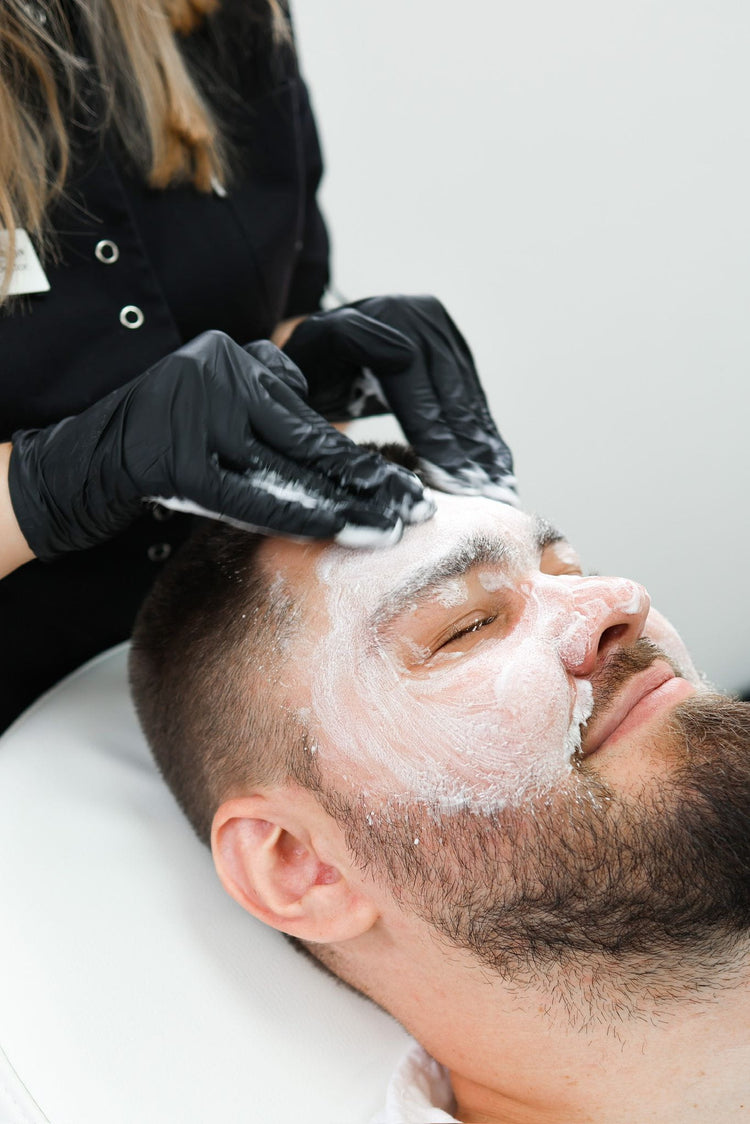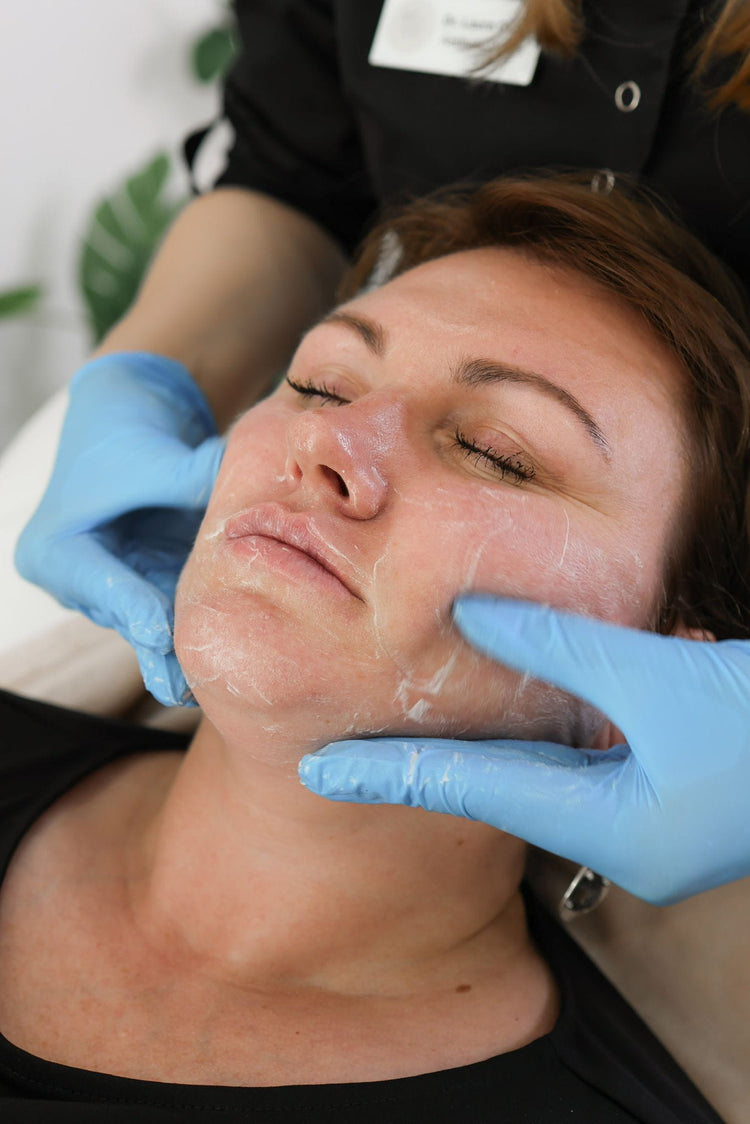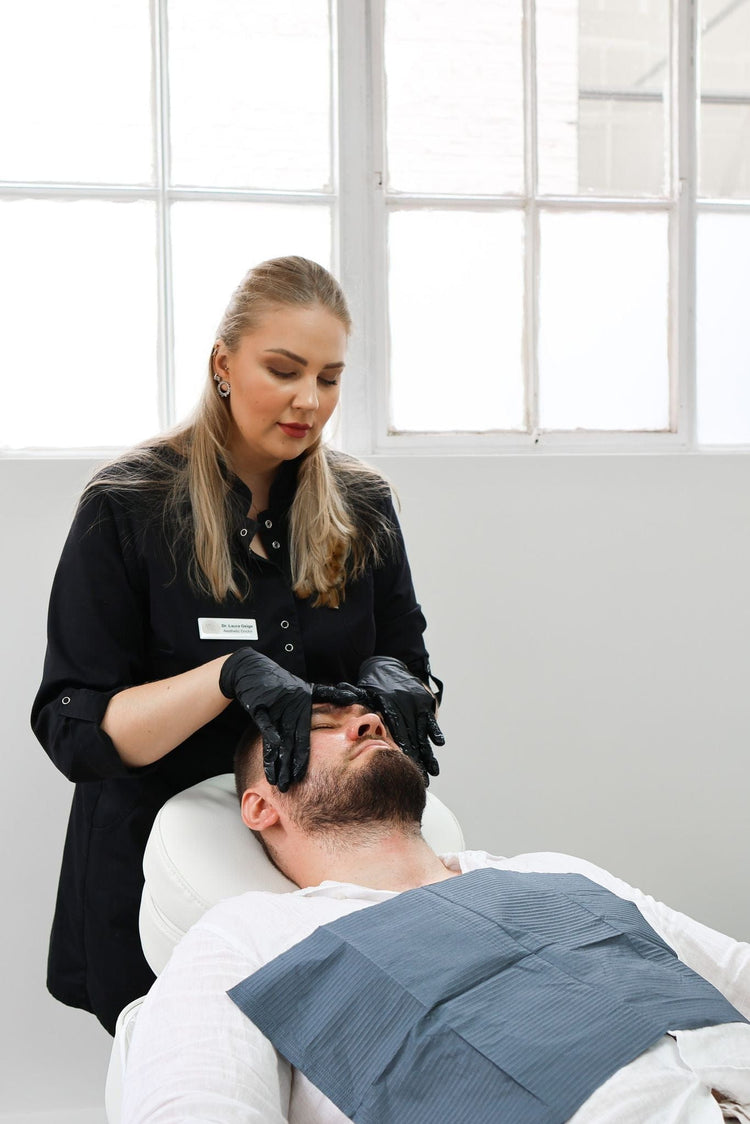Understanding Uneven Skin Tone
Uneven skin tone can be frustrating, leading to a complexion that appears dull and patchy. While genetics, sun exposure, and hormonal changes can contribute to this issue, there are effective strategies to address it. A comprehensive skincare consultation can provide personalized guidance on how to achieve a more balanced and radiant complexion.
Causes of Uneven Skin Tone
Uneven skin tone can be frustrating, leading to a complexion that appears dull and patchy. While genetics, sun exposure, and hormonal changes can contribute to this issue, there are effective strategies to address it. A comprehensive skincare consultation can provide personalized guidance on how to achieve a more balanced and radiant complexion.
During a consultation, a skincare professional will assess your skin type, concerns, and medical history to determine the underlying causes of your uneven skin tone. Common factors contributing to this issue include:
- Hyperpigmentation: Darker patches of skin caused by excess melanin production, often triggered by sun exposure, inflammation, or hormonal fluctuations.
- Post-inflammatory hyperpigmentation (PIH): Discoloration that occurs after acne breakouts, injuries, or other inflammatory skin conditions.
- Melasma: Dark patches on the face, often triggered by hormonal changes during pregnancy or sun exposure.
Based on the identified causes, a customized treatment plan will be developed. This may involve a combination of topical treatments, chemical peels, laser therapy, or other procedures to reduce pigmentation, even out skin tone, and promote a more radiant complexion.
Types of Uneven Skin Tone
Uneven skin tone can manifest in various ways. Some common types include:
Hyperpigmentation: This refers to darkened areas of skin caused by an excess of melanin. Sun exposure, inflammation, or hormonal fluctuations can trigger hyperpigmentation.

Post-inflammatory hyperpigmentation (PIH): This type of discoloration arises after acne breakouts, injuries, or inflammatory skin conditions. The inflammation triggers the overproduction of melanin, leading to dark spots.
Melasma: Characterized by dark patches often appearing on the face, melasma is commonly associated with hormonal changes during pregnancy or sun exposure.
Assessing Your Skin During Consultation
During a consultation, a skincare professional will assess your skin type, concerns, and medical history to determine the underlying causes of your uneven skin tone.
Skin History and Lifestyle Factors
During a consultation, a skincare professional will assess your skin type, concerns, and medical history to determine the underlying causes of your uneven skin tone. Common factors contributing to this issue include:
- Hyperpigmentation: Darker patches of skin caused by excess melanin production, often triggered by sun exposure, inflammation, or hormonal fluctuations.
- Post-inflammatory hyperpigmentation (PIH): Discoloration that occurs after acne breakouts, injuries, or other inflammatory skin conditions.
- Melasma: Dark patches on the face, often triggered by hormonal changes during pregnancy or sun exposure.
Based on the identified causes, a customized treatment plan will be developed. This may involve a combination of topical treatments, chemical peels, laser therapy, or other procedures to reduce pigmentation, even out skin tone, and promote a more radiant complexion.
Current Skincare Routine Review
During a skincare consultation, a professional will thoroughly assess your current skincare routine to understand what you are already doing for your skin.
- Products Used: They will ask about the specific products you use, including cleansers, toners, moisturizers, serums, and sunscreens.
- Frequency of Use: You’ll be asked how often you use each product and for how long.
- Any Concerns or Reactions: It’s important to mention any current skin concerns or adverse reactions you’ve experienced with any products.
This information helps the skincare professional identify potential contributing factors to your uneven skin tone and tailor a treatment plan that complements your existing routine.
Physical Examination of the Skin
During a consultation, a skincare professional will thoroughly examine your skin using both visual observation and palpation (gentle touch).
They will observe the overall texture, color, and condition of your skin, looking for any signs of hyperpigmentation, uneven tone, or other abnormalities.
Palpation allows them to assess skin thickness, elasticity, and sensitivity.
This physical examination helps provide a comprehensive understanding of your skin’s current state, identifying specific areas that require attention.
Treatment Options for Uneven Skin Tone
Uneven skin tone can be frustrating, leading to a complexion that appears dull and patchy. While genetics, sun exposure, and hormonal changes can contribute to this issue, there are effective strategies to address it. A comprehensive skincare consultation can provide personalized guidance on how to achieve a more balanced and radiant complexion.
Topical Treatments: Chemical Exfoliants, Brightening Serums, and Moisturizers
Topical treatments play a key role in addressing uneven skin tone. Chemical exfoliants like alpha hydroxy acids (AHAs) and beta hydroxy acids (BHAs) help remove dead skin cells and promote cell turnover, revealing brighter, more even-toned skin underneath.
Brightening serums containing ingredients such as vitamin C, niacinamide, kojic acid, or licorice root extract can help inhibit melanin production, reduce the appearance of hyperpigmentation, and improve overall skin brightness.
Moisturizers with hydrating and protective properties are essential for maintaining healthy skin and supporting the efficacy of other treatments. Look for moisturizers that contain antioxidants like vitamin E or green tea extract to protect against environmental damage that can worsen unevenness.
Professional Procedures: Microdermabrasion, Chemical Peels, Laser Therapy, Microneedling
Professional procedures offer more intensive approaches to addressing uneven skin tone. Microdermabrasion gently exfoliates the top layer of skin using fine crystals or a diamond-tipped wand, revealing smoother and brighter skin. Chemical peels involve applying a solution to the skin that removes the outer layers, reducing pigmentation and promoting cell renewal.
Laser therapy utilizes targeted light energy to break down melanin in dark spots and stimulate collagen production for improved skin texture and tone. Microneedling involves creating tiny punctures in the skin with fine needles, encouraging collagen and elastin synthesis, which can help minimize the appearance of scars and pigmentation irregularities.
The choice of professional procedure depends on factors like the severity of unevenness, skin type, and individual goals. A skincare professional will recommend the most suitable option based on a thorough assessment of your needs and concerns.
Addressing Underlying Causes: Hormonal Imbalances or Nutritional Deficiencies
During a consultation, a skincare professional will thoroughly assess your current skincare routine to understand what you are already doing for your skin.
- Products Used: They will ask about the specific products you use, including cleansers, toners, moisturizers, serums, and sunscreens.
- Frequency of Use: You’ll be asked how often you use each product and for how long.
- Any Concerns or Reactions: It’s important to mention any current skin concerns or adverse reactions you’ve experienced with any products.
This information helps the skincare professional identify potential contributing factors to your uneven skin tone and tailor a treatment plan that complements your existing routine.
When addressing underlying causes like hormonal imbalances, dietary adjustments and lifestyle changes can play a significant role.
Hormonal Imbalances:
- Working with a healthcare provider to identify and address any underlying hormonal imbalances through medication or lifestyle modifications.
- Tracking your menstrual cycle to understand potential hormonal fluctuations that may contribute to uneven skin tone.
Nutritional Deficiencies:
- Ensuring adequate intake of essential nutrients like vitamin C, vitamin E, zinc, and iron through a balanced diet or supplementation as recommended by a doctor or registered dietitian.
- Avoiding processed foods and sugary drinks that can contribute to inflammation and disrupt hormonal balance.
Developing a Personalized Skincare Plan
Uneven skin tone can be frustrating, leading to a complexion that appears dull and patchy. While genetics, sun exposure, and hormonal changes can contribute to this issue, there are effective strategies to address it. A comprehensive skincare consultation can provide personalized guidance on how to achieve a more balanced and radiant complexion.
Product Recommendations and Application Techniques
Uneven skin tone can be frustrating, leading to a complexion that appears dull and patchy. While genetics, sun exposure, and hormonal changes can contribute to this issue, there are effective strategies to address it. A comprehensive skincare consultation can provide personalized guidance on how to achieve a more balanced and radiant complexion.
During a consultation, a skincare professional will assess your skin type, concerns, and medical history to determine the underlying causes of your uneven skin tone. Common factors contributing to this issue include:
- Hyperpigmentation: Darker patches of skin caused by excess melanin production, often triggered by sun exposure, inflammation, or hormonal fluctuations.
- Post-inflammatory hyperpigmentation (PIH): Discoloration that occurs after acne breakouts, injuries, or other inflammatory skin conditions.
- Melasma: Dark patches on the face, often triggered by hormonal changes during pregnancy or sun exposure.
Based on the identified causes, a customized treatment plan will be developed. This may involve a combination of topical treatments, chemical peels, laser therapy, or other procedures to reduce pigmentation, even out skin tone, and promote a more radiant complexion.

During a skincare consultation, a professional will thoroughly assess your current skincare routine to understand what you are already doing for your skin.
- Products Used: They will ask about the specific products you use, including cleansers, toners, moisturizers, serums, and sunscreens.
- Frequency of Use: You’ll be asked how often you use each product and for how long.
- Any Concerns or Reactions: It’s important to mention any current skin concerns or adverse reactions you’ve experienced with any products.
This information helps the skincare professional identify potential contributing factors to your uneven skin tone and tailor a treatment plan that complements your existing routine.
During a consultation, a skincare professional will thoroughly examine your skin using both visual observation and palpation (gentle touch).
They will observe the overall texture, color, and condition of your skin, looking for any signs of hyperpigmentation, uneven tone, or other abnormalities.
Palpation allows them to assess skin thickness, elasticity, and sensitivity.
This physical examination helps provide a comprehensive understanding of your skin’s current state, identifying specific areas that require attention.
Topical treatments play a key role in addressing uneven skin tone. Chemical exfoliants like alpha hydroxy acids (AHAs) and beta hydroxy acids (BHAs) help remove dead skin cells and promote cell turnover, revealing brighter, more even-toned skin underneath.
Brightening serums containing ingredients such as vitamin C, niacinamide, kojic acid, or licorice root extract can help inhibit melanin production, reduce the appearance of hyperpigmentation, and improve overall skin brightness.
Moisturizers with hydrating and protective properties are essential for maintaining healthy skin and supporting the efficacy of other treatments. Look for moisturizers that contain antioxidants like vitamin E or green tea extract to protect against environmental damage that can worsen unevenness.
Professional procedures offer more intensive approaches to addressing uneven skin tone. Microdermabrasion gently exfoliates the top layer of skin using fine crystals or a diamond-tipped wand, revealing smoother and brighter skin. Chemical peels involve applying a solution to the skin that removes the outer layers, reducing pigmentation and promoting cell renewal.
Laser therapy utilizes targeted light energy to break down melanin in dark spots and stimulate collagen production for improved skin texture and tone. Microneedling involves creating tiny punctures in the skin with fine needles, encouraging collagen and elastin synthesis, which can help minimize the appearance of scars and pigmentation irregularities.
The choice of professional procedure depends on factors like the severity of unevenness, skin type, and individual goals. A skincare professional will recommend the most suitable option based on a thorough assessment of your needs and concerns.
When addressing underlying causes like hormonal imbalances, dietary adjustments and lifestyle changes can play a significant role.
Hormonal Imbalances:
- Working with a healthcare provider to identify and address any underlying hormonal imbalances through medication or lifestyle modifications.
- Tracking your menstrual cycle to understand potential hormonal fluctuations that may contribute to uneven skin tone.
Nutritional Deficiencies:
- Ensuring adequate intake of essential nutrients like vitamin C, vitamin E, zinc, and iron through a balanced diet or supplementation as recommended by a doctor or registered dietitian.
- Avoiding processed foods and sugary drinks that can contribute to inflammation and disrupt hormonal balance.
Frequency of Treatments and Follow-Up Appointments
Developing a personalized skincare plan for addressing uneven skin tone begins with a thorough consultation with a skincare professional. During this session, the professional will assess your skin type, concerns, medical history, and current skincare routine.
Based on this assessment, they’ll determine the underlying causes of your uneven skin tone, which could include hyperpigmentation, post-inflammatory hyperpigmentation (PIH), or melasma.
The frequency of treatments will vary depending on the chosen approach and the severity of your concerns. Topical treatments like chemical exfoliants, brightening serums, and moisturizers may be recommended for daily use. Professional procedures, such as microdermabrasion, chemical peels, laser therapy, or microneedling, might require multiple sessions spaced weeks apart.
Follow-up appointments are crucial to monitor progress, adjust the treatment plan as needed, and ensure optimal results. The skincare professional will evaluate your skin’s response to the treatments and provide guidance on how to maintain a balanced and radiant complexion long-term.
Remember that addressing uneven skin tone is often a gradual process, requiring patience and consistency.
Sun Protection Strategies and Lifestyle Modifications
Uneven skin tone can be frustrating, leading to a complexion that appears dull and patchy. While genetics, sun exposure, and hormonal changes can contribute to this issue, there are effective strategies to address it. A comprehensive skincare consultation can provide personalized guidance on how to achieve a more balanced and radiant complexion.
During a consultation, a skincare professional will assess your skin type, concerns, and medical history to determine the underlying causes of your uneven skin tone. Common factors contributing to this issue include:
- Hyperpigmentation: Darker patches of skin caused by excess melanin production, often triggered by sun exposure, inflammation, or hormonal fluctuations.
- Post-inflammatory hyperpigmentation (PIH): Discoloration that occurs after acne breakouts, injuries, or other inflammatory skin conditions.
- Melasma: Dark patches on the face, often triggered by hormonal changes during pregnancy or sun exposure.
Based on the identified causes, a customized treatment plan will be developed. This may involve a combination of topical treatments, chemical peels, laser therapy, or other procedures to reduce pigmentation, even out skin tone, and promote a more radiant complexion.
Developing a personalized skincare plan requires a thorough understanding of your individual needs.
During a consultation, a skincare professional will thoroughly assess your current skincare routine to understand what you are already doing for your skin.
- Products Used: They will ask about the specific products you use, including cleansers, toners, moisturizers, serums, and sunscreens.
- Frequency of Use: You’ll be asked how often you use each product and for how long.
- Any Concerns or Reactions: It’s important to mention any current skin concerns or adverse reactions you’ve experienced with any products.
This information helps the skincare professional identify potential contributing factors to your uneven skin tone and tailor a treatment plan that complements your existing routine.
During a consultation, a skincare professional will thoroughly examine your skin using both visual observation and palpation (gentle touch).
They will observe the overall texture, color, and condition of your skin, looking for any signs of hyperpigmentation, uneven tone, or other abnormalities.
Palpation allows them to assess skin thickness, elasticity, and sensitivity.
This physical examination helps provide a comprehensive understanding of your skin’s current state, identifying specific areas that require attention.
Topical treatments play a key role in addressing uneven skin tone. Chemical exfoliants like alpha hydroxy acids (AHAs) and beta hydroxy acids (BHAs) help remove dead skin cells and promote cell turnover, revealing brighter, more even-toned skin underneath.
Brightening serums containing ingredients such as vitamin C, niacinamide, kojic acid, or licorice root extract can help inhibit melanin production, reduce the appearance of hyperpigmentation, and improve overall skin brightness.
Moisturizers with hydrating and protective properties are essential for maintaining healthy skin and supporting the efficacy of other treatments. Look for moisturizers that contain antioxidants like vitamin E or green tea extract to protect against environmental damage that can worsen unevenness.
Professional procedures offer more intensive approaches to addressing uneven skin tone. Microdermabrasion gently exfoliates the top layer of skin using fine crystals or a diamond-tipped wand, revealing smoother and brighter skin. Chemical peels involve applying a solution to the skin that removes the outer layers, reducing pigmentation and promoting cell renewal.
Laser therapy utilizes targeted light energy to break down melanin in dark spots and stimulate collagen production for improved skin texture and tone. Microneedling involves creating tiny punctures in the skin with fine needles, encouraging collagen and elastin synthesis, which can help minimize the appearance of scars and pigmentation irregularities.
The choice of professional procedure depends on factors like the severity of unevenness, skin type, and individual goals. A skincare professional will recommend the most suitable option based on a thorough assessment of your needs and concerns.
When addressing underlying causes like hormonal imbalances, dietary adjustments and lifestyle changes can play a significant role.
Hormonal Imbalances:
- Working with a healthcare provider to identify and address any underlying hormonal imbalances through medication or lifestyle modifications.
- Tracking your menstrual cycle to understand potential hormonal fluctuations that may contribute to uneven skin tone.
Nutritional Deficiencies:
- Ensuring adequate intake of essential nutrients like vitamin C, vitamin E, zinc, and iron through a balanced diet or supplementation as recommended by a doctor or registered dietitian.
- Avoiding processed foods and sugary drinks that can contribute to inflammation and disrupt hormonal balance.
Sun Protection is Crucial for Preventing Further Pigmentation:
Wearing sunscreen daily is essential, regardless of your skin type. Choose a broad-spectrum sunscreen with an SPF of 30 or higher and apply it liberally to all exposed skin surfaces, including the face, neck, ears, and hands.

Remember that addressing uneven skin tone is often a gradual process, requiring patience and consistency. With a personalized skincare plan, professional guidance, and diligent sun protection, you can achieve a more balanced and radiant complexion over time.
Enquire about personalized skin care solutions at It’s Me & You Clinic with Dr. Laura Geige
- The Best THC Beverages For A Relaxing Evening At Home - December 6, 2025
- The Benefits Of CBD Gummy Edibles For Overall Wellness - December 3, 2025
- THC Seltzers:A New Trend In Social Drinking - December 2, 2025
